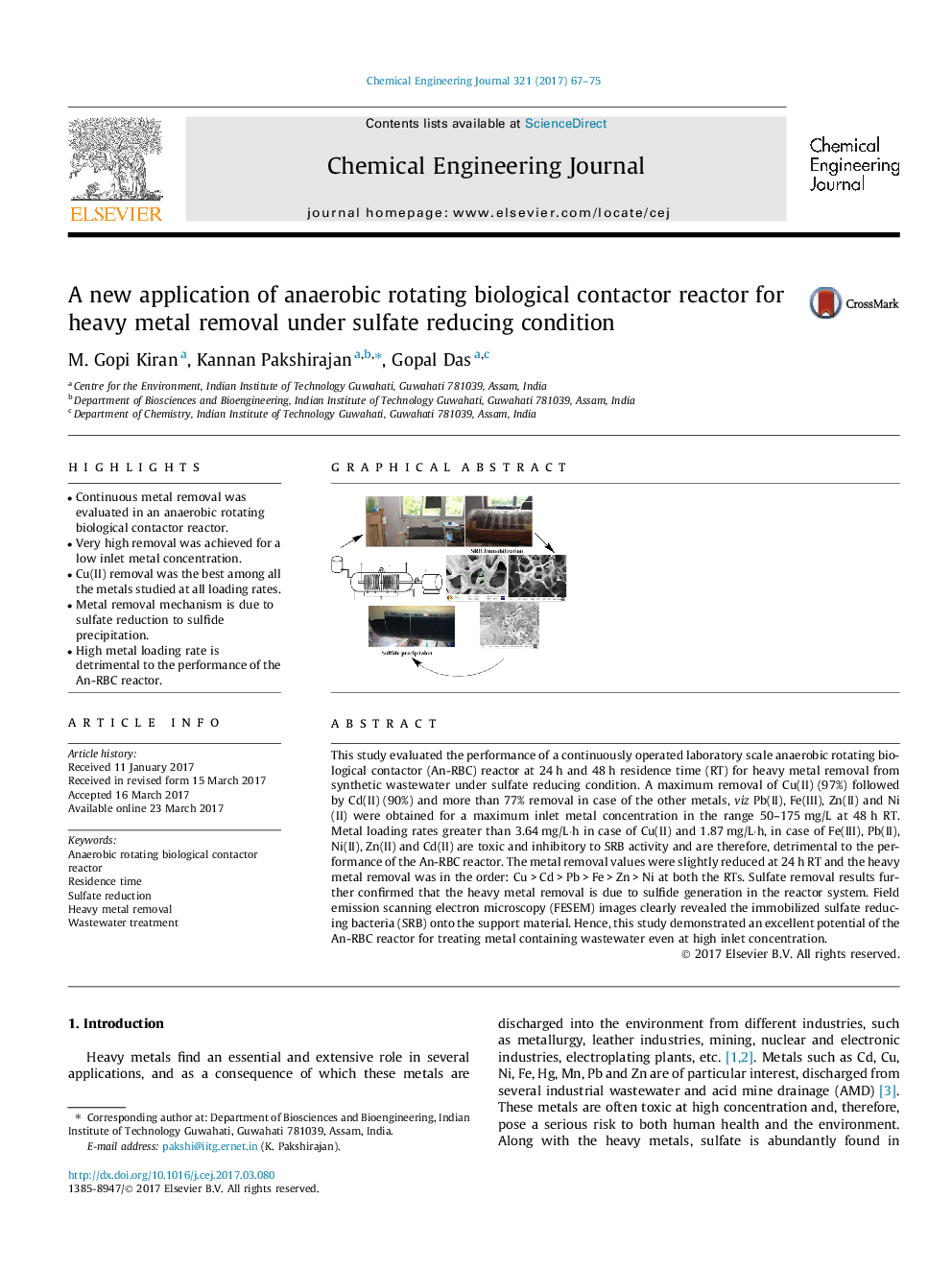| کد مقاله | کد نشریه | سال انتشار | مقاله انگلیسی | نسخه تمام متن |
|---|---|---|---|---|
| 6465785 | 1422957 | 2017 | 9 صفحه PDF | دانلود رایگان |
- Continuous metal removal was evaluated in an anaerobic rotating biological contactor reactor.
- Very high removal was achieved for a low inlet metal concentration.
- Cu(II) removal was the best among all the metals studied at all loading rates.
- Metal removal mechanism is due to sulfate reduction to sulfide precipitation.
- High metal loading rate is detrimental to the performance of the An-RBC reactor.
This study evaluated the performance of a continuously operated laboratory scale anaerobic rotating biological contactor (An-RBC) reactor at 24 h and 48 h residence time (RT) for heavy metal removal from synthetic wastewater under sulfate reducing condition. A maximum removal of Cu(II) (97%) followed by Cd(II) (90%) and more than 77% removal in case of the other metals, viz Pb(II), Fe(III), Zn(II) and Ni(II) were obtained for a maximum inlet metal concentration in the range 50-175 mg/L at 48 h RT. Metal loading rates greater than 3.64 mg/L·h in case of Cu(II) and 1.87 mg/L·h, in case of Fe(III), Pb(II), Ni(II), Zn(II) and Cd(II) are toxic and inhibitory to SRB activity and are therefore, detrimental to the performance of the An-RBC reactor. The metal removal values were slightly reduced at 24 h RT and the heavy metal removal was in the order: Cu > Cd > Pb > Fe > Zn > Ni at both the RTs. Sulfate removal results further confirmed that the heavy metal removal is due to sulfide generation in the reactor system. Field emission scanning electron microscopy (FESEM) images clearly revealed the immobilized sulfate reducing bacteria (SRB) onto the support material. Hence, this study demonstrated an excellent potential of the An-RBC reactor for treating metal containing wastewater even at high inlet concentration.
135
Journal: Chemical Engineering Journal - Volume 321, 1 August 2017, Pages 67-75
